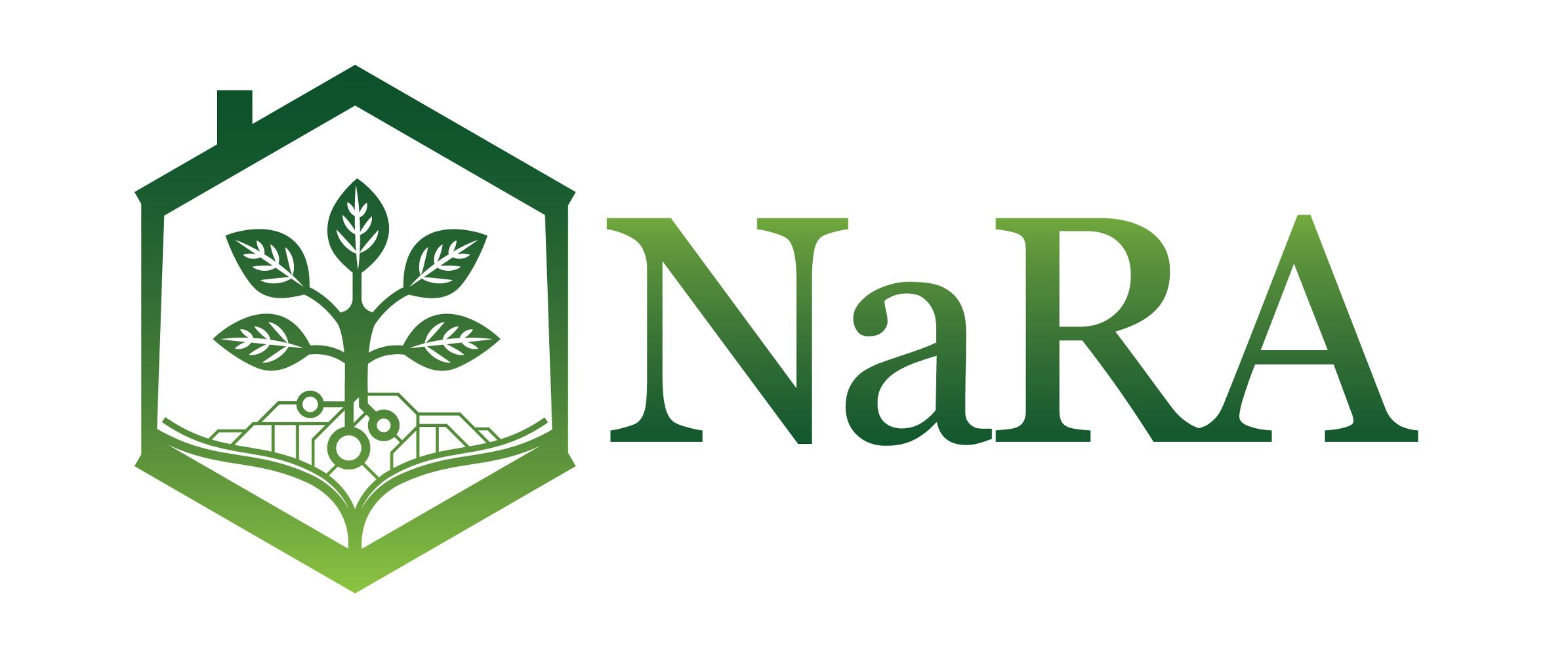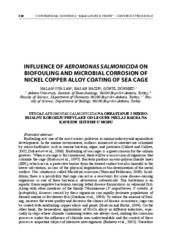Influence Of Aeromonas Salmonicida On Biofouling And Microbial Corrosion Of Nickel Copper Alloy Coating Of Sea Cage
Uticaj aeromonas salmonicida na obrastanje i mikrobijalnu koroziju prevlake od legure nikla i bakra na kavezne sisteme u moru
| dc.contributor.author | Oya San, Nalan | |
| dc.contributor.author | Nazir, Hasan | |
| dc.contributor.author | Donmez, Gonül | |
| dc.date.accessioned | 2015-10-12T17:11:54Z | |
| dc.date.available | 2015-10-12T17:11:54Z | |
| dc.identifier.uri | http://arhiva.nara.ac.rs/handle/123456789/1026 | |
| dc.description.abstract | Biofouling acts one of the most serious problems to marine industry and aquaculture development. In the marine environment, surfaces immersed in seawater are colonized by micro-biofoulers such as marine bacteria, algae, and protozoa (Callow and Callow, 2002; Dobretsov et al., 2006). Biofouling of sea cages is a great concern for the salmon growers. When a sea cage is first immersed, there will be a succession of organisms that colonize the cage (Hodson et al., 1997). Bacteria produce an exo-polysaccharide layer (EPS), which act as a protective barrier from the treated surface but also harmful to the lower substratum, in case of the physical degradation or bio-deterioration of the metal surface. This situation is called Microbial corrosion (Yuan and Pehkonen, 2009). In addition, there is a possibility that cage can act as a reservoirs for some disease-causing organisms so one of these bacteria is Aeromonas salmonicida. This bacterium is an aquatic Gram-negative bacterium causing lethal disease furunculosis in salmonid fish. Along with other members of the family Vibrionaceae (V. anguillarum, V. ordalii, A. hydrophila), diseases caused by these organisms can rapidly decimate populations of farmed marine or freshwater fish (Garduna et al., 1994). To reduce the amount of fouling, increase the water quality and decrease the chance of disease occurrence, cage can be coated with antifouling copper alloys and paints (Hodson and Burke, 1994). On the other hand, the tremendous applications of Ni-Cu alloys in different industries, especially in ships where chloride containing waters are always used, making the corrosion processes under the influence of chloride ions understandable and the control of these processes important subject of intensive investigations (Badawy et al., 2005). Therefore this study examines the effects of A. salmonicida in biofouling on Ni-Cu cage coating and its microbial corrosion influence. This study was performed using pure cultures of the A. salmonicida, isolated from water samples. The isolated bacterium was characterized on the basis of 16S rRNA sequences and submitted to NCBI under Accession No. GU907676 (San et al., 2010). The bacterium was cultured then centrifuged and used for bio-corrosion experiments. Electrochemical measurements were carried out in a conventional three-electrode cell. The polarization curves were measured using CompactStat Potentiostat (IviumStat, The Netherlands). Mild steel was used as a working electrode in electrochemical studies. The Ag/AgCl (sat. KCl) electrode (CHI111, CH Instrument, USA) was used as the reference electrode and a platinum wire (CHI115, CH Instrument, USA) was used as counter electrode for all experiments. Ni-Cu alloy was electrodeposited from a nickel-copper bath. The corrosion potential of Ni-Cu electrodes was -0.08 V (vs. Ag/AgCl) but, the corrosion potential of Ni-Cu electrodes in the medium inoculated with the bacterium shifted to cathodic site, -0.63 V (vs. Ag/AgCl) means the increased rate of corrosion. In addition, increase of corrosion current and corrosion current densities with an increase in presence of bacterium means the increased rate of corrosion. Besides, pH values of the medium did not change throughout the experiment (6.8) but after immersion, the pH value decreased to acidic value, 5.5 Furthermore, SEM micrographs show influence of biofouling by bacterium to Ni-Cu alloy. As a consequence, A. salmonicida colonize, strongly adhere and biofouling on alloy surfaces. This situation results in causing the lethal disease in salmon fish and microbial corrosion of cage material. | en |
| dc.subject | Aeromonas salmonicida | sr |
| dc.subject | Biofouling | sr |
| dc.subject | Microbial corrosion | en |
| dc.subject | Nickel-Copper Alloy | en |
| dc.subject | Sea cage | en |
| dc.title | Influence Of Aeromonas Salmonicida On Biofouling And Microbial Corrosion Of Nickel Copper Alloy Coating Of Sea Cage | en |
| dc.title.alternative | Uticaj aeromonas salmonicida na obrastanje i mikrobijalnu koroziju prevlake od legure nikla i bakra na kavezne sisteme u moru | sr |
Files in this item
This item appears in the following Collection(s)
-
5. International Conference “Aquaculture & Fishery” Faculty of Agriculture, Belgrade-Zemun, Serbia, June, 1 - 3. 2011.
http://www.cefah.agrif.bg.ac.rs/konferencija/konferencija.html



